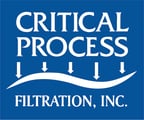We hear this question on a regular basis, and although some may quip “buy cheaper filters”, we contend that installing the RIGHT filter is the key to doing both simultaneously.
Our experience with customers in different industries and applications has shown that those who spent the time to assess their process and test alternative filters are the ones that succeeded in finding cost savings and process performance improvement. Since every application has its nuances and every company has its standards, in this article, we will offer a more generic and holistic view of the question as opposed to a single application or single filter approach. The ideas below are things you can try on your own and see if some simple changes will produce the results you need.
To get started, be sure your filtration process is well-defined and can be quantified in some way. Process definition and quantification could include:
- The retention rate of bacteria or particles
- Process volume filtered per filter area
- Filter change-out rates and timing
- Pressure drops
- Compatibility of the filter with the process fluid and the process fluid with the filter (neither should have adverse effects on the other)
- Maintenance and labor costs and/or process downtime associated with filter changes
Once the process and key parameters are properly defined (and documented), you can look for measurable ways to make improvements. Start adjusting by targeting areas that need immediate attention. If none are obvious, look to see if one or more measures are "over-specified". That could help identify areas for more cost-effective filter solutions. In any process, changing the target performance for one measure may require adjusting the targets for other measures to allow the change. Continue to document each change and the results of the change along the way.
The following information will provide ways to address low-performing areas and cost-effective solutions that will improve process performance.
Removing More Contamination Through Filter Design
The only way to remove more contamination is to use a more efficient filter media. That could mean filter media with smaller pore sizes, or media of the same pore size rating but with higher removal efficiency. It’s usually the media in the final filter of the system. The best way to determine if the change worked is to test and analyze your results.
If more contamination is going to be removed with the same number of filters, then some of those filters may not last as long in service. If filter life is an important performance measure, then the filters used need to have a higher dirt-holding capacity to last at least as long as the current filters.
Adding Greater Capacity Through Media Density
There are three ways to add capacity to a filter system. One is to increase the amount of media in the system, automatically increasing the amount of dirt the system can hold. The second is to use media such as asymmetric membrane media instead of symmetric media because it has a higher dirt-holding capacity. A third way is to use "high area" filter elements designed with approximately 25% more filtration area than standard cartridges. For example, installing a 20-inch filter in place of a 10-inch filter. This will reduce the number of filters you need to replace, which lowers costs.
Effects Filter May Have on Fluid Chemistry
Some filter media attract protein molecules. Therefore, using such media in bio-pharmaceuticals, wine, beer, or other beverages, or some chemical processing can remove proteins and alter the content and quality of the fluid. With the help of the Technical Service Team, you can evaluate filter media in the fluid to be sure it is not adversely affecting your product.
Lowering Operating Costs
Most of the changes discussed above are likely to increase the purchase price of the filters used in the system. So how are operating costs reduced?
Once the better filter solution is installed, it increases filter life and reduces the number of filters used per product unit.
Secondly, changing filters can lower costs by making downstream operations more efficient. If the performance of downstream processing improves as a result of changes upstream, one might reduce the amount of time spent re-working product to remove contaminants, or reducing the frequency or requirements for quality testing.
Thirdly, higher costs can be offset by increasing revenue. That could mean reducing the amount of product that needs to be scrapped due to contamination, which in turn gives you more product to sell. It could also mean improving product quality so your company can charge a premium price.
Every System Has Room for Improvement
This is just one approach, but it shows how you may get better performance from your filter system and still reduce your cost of ownership for that system. By taking some of these steps and balancing filter design factors you could:
- Improve contaminant removal efficiency
- Reduce the frequency of filter replacement
- Assure fluid chemical quality
- Lower downstream process operating costs
- Increase company revenue
Need help evaluating your current filtration process performance? Feel free to email us at sales@criticalprocess.com or give us a call at (603) 880-4420.
